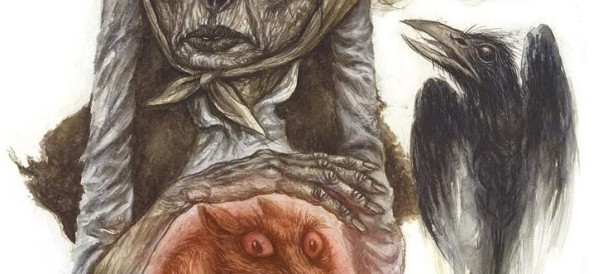 20 Terms
20 TermsHome > Terms > English (EN) > literature and gender
literature and gender
A variety of approaches to the topic of women and literature has emerged in the last thirty years as Women’s Studies has solidified and expanded as an academic field, building on the earlier work of women writers and philosophers. While the rise of academic feminism in the US coincides to some degree with the women’s liberation movement of the late 1960s and early 1970s, its history both extends back further in time and is also largely yet to be written.
Much feminist literary criticism and women-and-literature courses take writing by women as their object of analysis, noting that women have borne witness to their lives and assumed artistic authority despite patriarchal culture’s prohibitions, its denigration of female minds and imaginations, and the material difficulties historically facing women writers, including the demands of wife-and motherhood and the limitations of women’s education and property rights. But within feminist criticism emphases vary. Some readers and critics simply affirm the value of women’s texts by according them attention equal to or greater than men’s texts, looking to balance the historic dominance of the masculine point of view. Others attempt to identify a female tradition of writing—women writers consciously examining the status of their sex in their place and time and building upon the work of literary foremothers in the context of women’s relative silence.
Biographically informed approaches, using paraliterary documents and information in order to take account of the effect of social pressures and expectations on women’s creative lives and expression, is held by some to be more effectively feminist than the more traditional approach of taking the literary object out of its context. Further, in a gesture critical of aesthetic hierarchies and cognizant of women’s exclusion from their formation, literary importance and critical attention are accorded to non-traditional and unpublished writing genres like diaries and letters in this approach. Deriving alternative criteria from the form and content of women’s writing—criteria that dissent from and criticize the existing literary canon—is a similar project of feminist criticism. This often results in the revaluation of popular, sentimental and politically or socially engaged writing: writing that manifests other interests and seeks out different audiences than does the high literary culture historically dominated by men. As a consequence of these approaches, much of literary history is in the process of being rewritten.
Feminist criticism is not limited to women’s writing. Working on the assumption that gender roles are not a given but that gender is a social construct and gender ideology is propounded and reinforced through literature as through other social institutions, gender critics read literary texts from the masculine mainstream using gender as a lens. They explore these texts’ unacknowledged gender biases and note their dependence on gender stereotypes, on the flattening and simplification of women characters and of relations between men and women. Further, they uncover these texts’ regulation of gender roles through encouraging identification with normative gender behavior and punishment of gender deviance. Thus feminist critics extend their project to the examination and critique of masculine roles, deeming those roles no less constructed, and constricting, than the feminine; they further note the tacit enforcement of heterosexuality in much mainstream literature.
Beyond feminist approaches to literary works and literary history is the domain of feminist theory in which writers work to limn the historical, political, psychological and linguistic means by which gender ideology has been formed and reproduced over time.
Further, increasingly the work of women writers and critics of color, third-world critics, lesbians and working-class writers has functioned to extend and critique earlier feminist criticism. These critics argue, from their various positions, that Anglo-European feminism has historically been unselfconsciously white, middle class and heterosexual in its approach and focus, and has merely extended masculine individualist notions of the self to white women. Further, they argue that Western women were and have remained complicit with such forces as colonialism, racism and classism. While working to include the literature and history of such doubly excluded women, these critics further break down the category of “women” and attest to the multiplicity of women’s lives and roles.
Rather than claiming multiple victimization and exclusion based upon both gender and other categories of identity they work to identify alternative histories and literatures, including the previously unrecognized traditions, notions of selfhood, and forms of power and community, among, for example, ethnic-minority queer, or disabled women.
Gilbert and Gubar’s work in the 1970s was an epoch-making look at an alternative set of women writers’ practices and traditions. Elaine Showalter and Catherine Stimpson’s early work is also from this period, while Carol Gilligan’s work on “women’s voices” as unique continues to have influence among those interested in identifying “women’s ways of knowing.” European psychoanalytic and poststructuralist criticism by Helene Cixous, Julia Kristeva and the Lacanian critic Luce Iragaray enjoyed a strong vogue in the 1980s.
American critics doing their own work involving psychoanalysis and gender included Jane Gallop and Shoshana Felman. In the late 1980s and early to mid-1990s, Donna Harraway pioneered arguments from a postmodern, post-gender position, while Judith Butler incorporated poststructuralist philosophy in her work to emphasize that gender is performed rather than essential. These theoretical positions have influenced how women’s work is read, de-emphasizing the idea of an alternative tradition and focusing instead on the constitutive and critical incoherences of “the subject”—i.e. the selfconscious individual—constituted under patriarchy and through its language.
Alternatively critics like Janice Radway departing from an emphasis on academic expertise, have sought to learn and acknowledge what women readers of various class and educational backgrounds understand about their own cultural practices as readers.
Among the various theorists pointing out the limitations of white feminism’s approaches, sometimes utilizing, sometimes criticizing its focus on the incoherence or non-existence of the subject, have been African American critics like bell hooks, Chicanas/Latinas like Gloria Anzaldúa and post-colonial thinkers like Gayatri Chakravorty Spivak.
The reading and teaching of literature by women is now the norm rather than the exception. Besides the existence of Women’s Studies classes and programs, mainstream anthologies (like those from Norton, Longmans, and Heath) now incorporate work by women side-by-side with that of men as a matter of course, and the anthologies have grown correspondingly Further, both womencentered presses (like England’s Virago, the Feminist Press of the City University of New York, or Kitchen Table) and mainstream publishers have joined in the process of publishing new women’s texts and recovering and reprinting earlier ones. Mary Shelley’s Frankenstein and Maxine Hong Kingston’s Woman Warrior (1976) are among the most-read books in high schools and college freshman courses throughout the US. The incorporation of feminist approaches into the academic mainstream does not lessen the importance of feminist academic and paraacademic institutions like the journals Signs (established 1975), Women’s Studies (established 1972), Women’s Review of Books (1984) and Genders (1988). These institutions and others continue to testify to the notion that from women’s history and literature springs a fount of criticism of the mainstream and a celebration of the many other forms of seeing and being that exist.
- Part of Speech: noun
- Synonym(s):
- Blossary:
- Industry/Domain: Culture
- Category: American culture
- Company: Routledge
- Product:
- Acronym-Abbreviation:
Other Languages:
Member comments
Terms in the News
Billy Morgan
Sports; Snowboarding
The British snowboarder Billy Morgan has landed the sport’s first ever 1800 quadruple cork. The rider, who represented Great Britain in the 2014 Winter Olympics in Sochi, was in Livigno, Italy, when he achieved the man-oeuvre. It involves flipping four times, while body also spins with five complete rotations on a sideways or downward-facing axis. The trick ...
Marzieh Afkham
Broadcasting & receiving; News
Marzieh Afkham, who is the country’s first foreign ministry spokeswoman, will head a mission in east Asia, the state news agency reported. It is not clear to which country she will be posted as her appointment has yet to be announced officially. Afkham will only be the second female ambassador Iran has had. Under the last shah’s rule, Mehrangiz Dolatshahi, a ...
Weekly Packet
Language; Online services; Slang; Internet
Weekly Packet or "Paquete Semanal" as it is known in Cuba is a term used by Cubans to describe the information that is gathered from the internet outside of Cuba and saved onto hard drives to be transported into Cuba itself. Weekly Packets are then sold to Cuban's without internet access, allowing them to obtain information just days - and sometimes hours - after it ...
Asian Infrastructure Investment Bank (AIIB)
Banking; Investment banking
The Asian Infrastructure Investment Bank (AIIB) is an international financial institution established to address the need in Asia for infrastructure development. According to the Asian Development Bank, Asia needs $800 billion each year for roads, ports, power plants or other infrastructure projects before 2020. Originally proposed by China in 2013, a signing ...
Spartan
Online services; Internet
Spartan is the codename given to the new Microsoft Windows 10 browser that will replace Microsoft Windows Internet Explorer. The new browser will be built from the ground up and disregard any code from the IE platform. It has a new rendering engine that is built to be compatible with how the web is written today. The name Spartan is named after the ...
Featured Terms
werewolf
In Serbian myth, werewolves were usually closely tied to vampires; occasionally the words are used interchangibly. It was believed that werewolves are ...
Contributor
Featured blossaries
Browers Terms By Category
- Advertising(244)
- Event(2)
Marketing(246) Terms
- Fiction(910)
- General literature(746)
- Poetry(598)
- Chilldren's literature(212)
- Bestsellers(135)
- Novels(127)
Literature(3109) Terms
- Cooking(3691)
- Fish, poultry, & meat(288)
- Spices(36)
Culinary arts(4015) Terms
- General Finance(7677)
- Funds(1299)
- Commodity exchange(874)
- Private equity(515)
- Accountancy(421)
- Real estate investment(192)
Financial services(11765) Terms
- Authors(2488)
- Sportspeople(853)
- Politicians(816)
- Comedians(274)
- Personalities(267)
- Popes(204)




